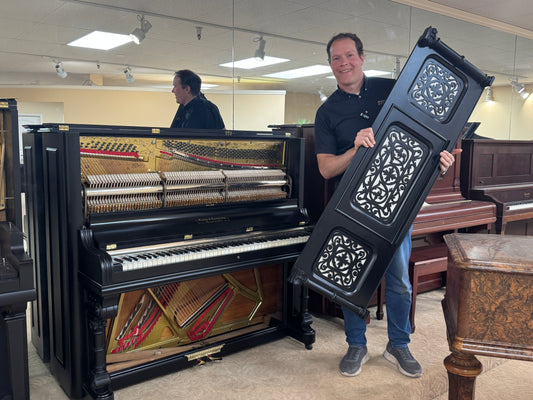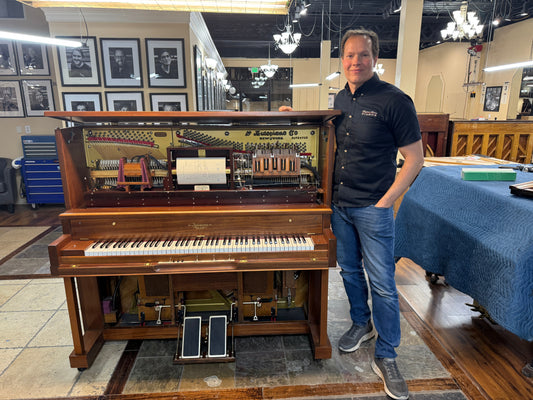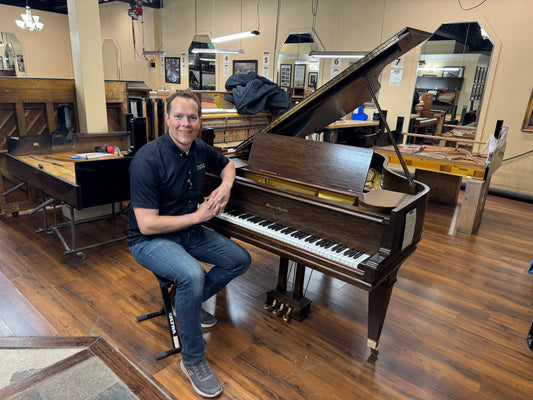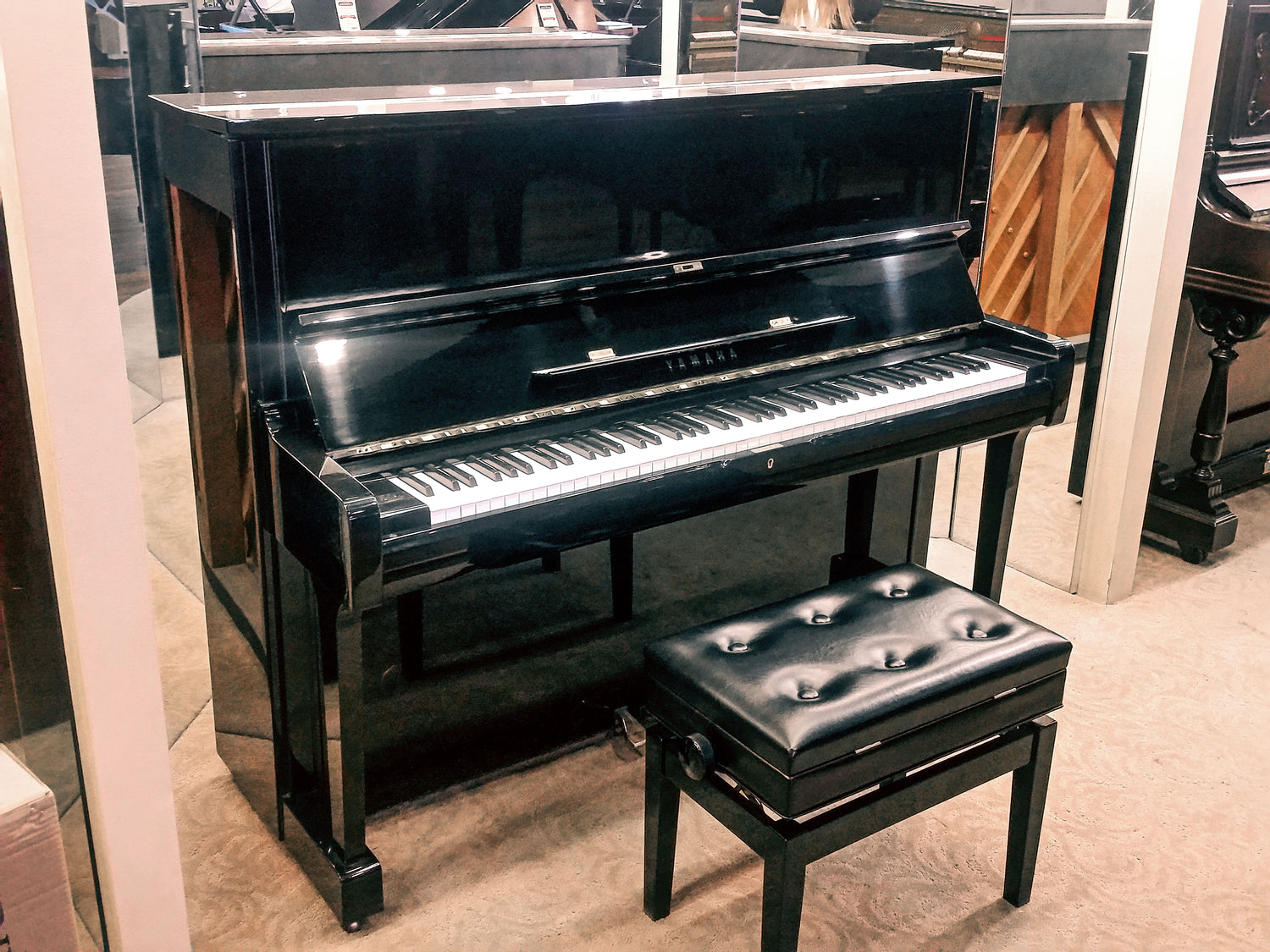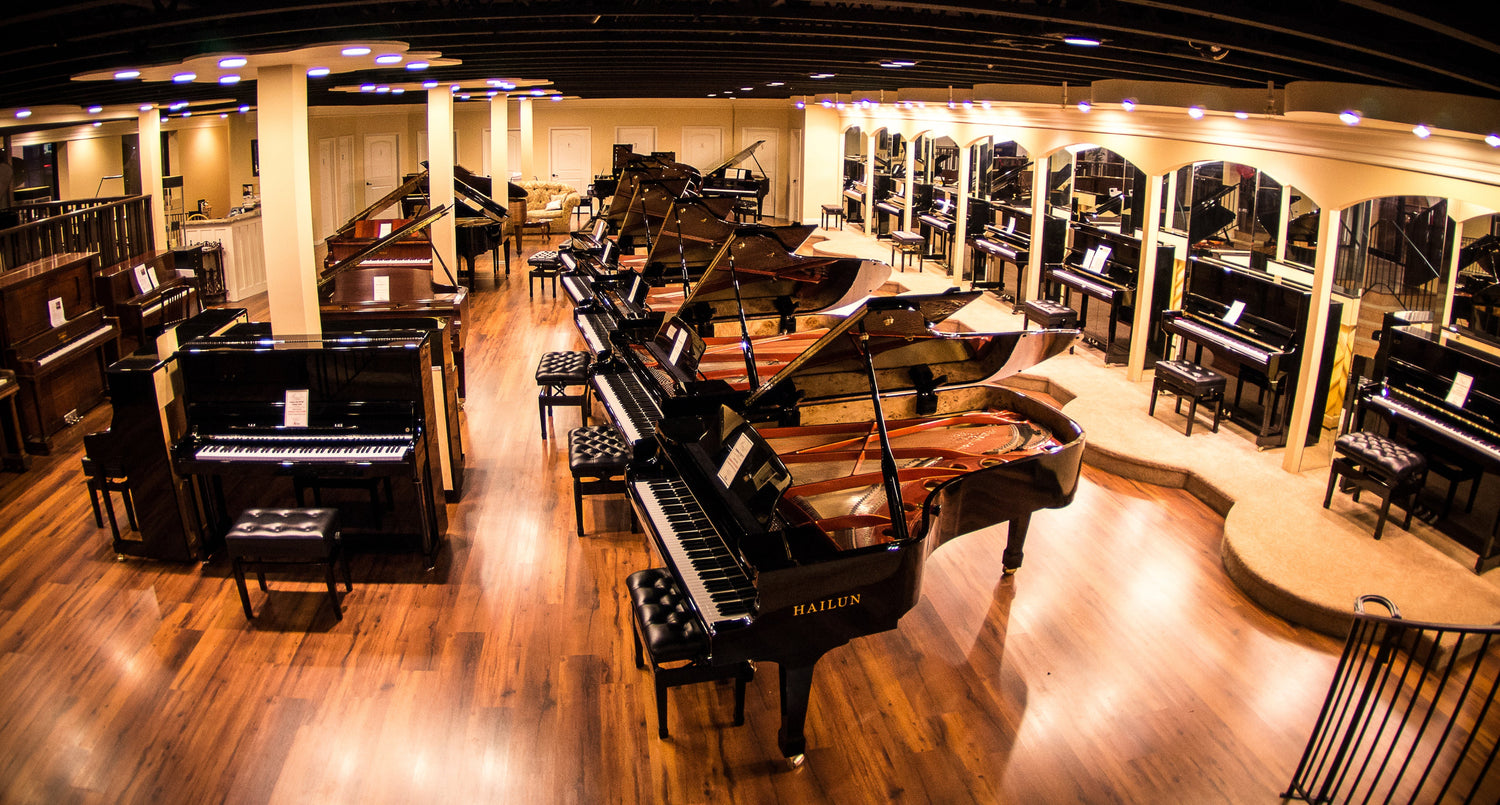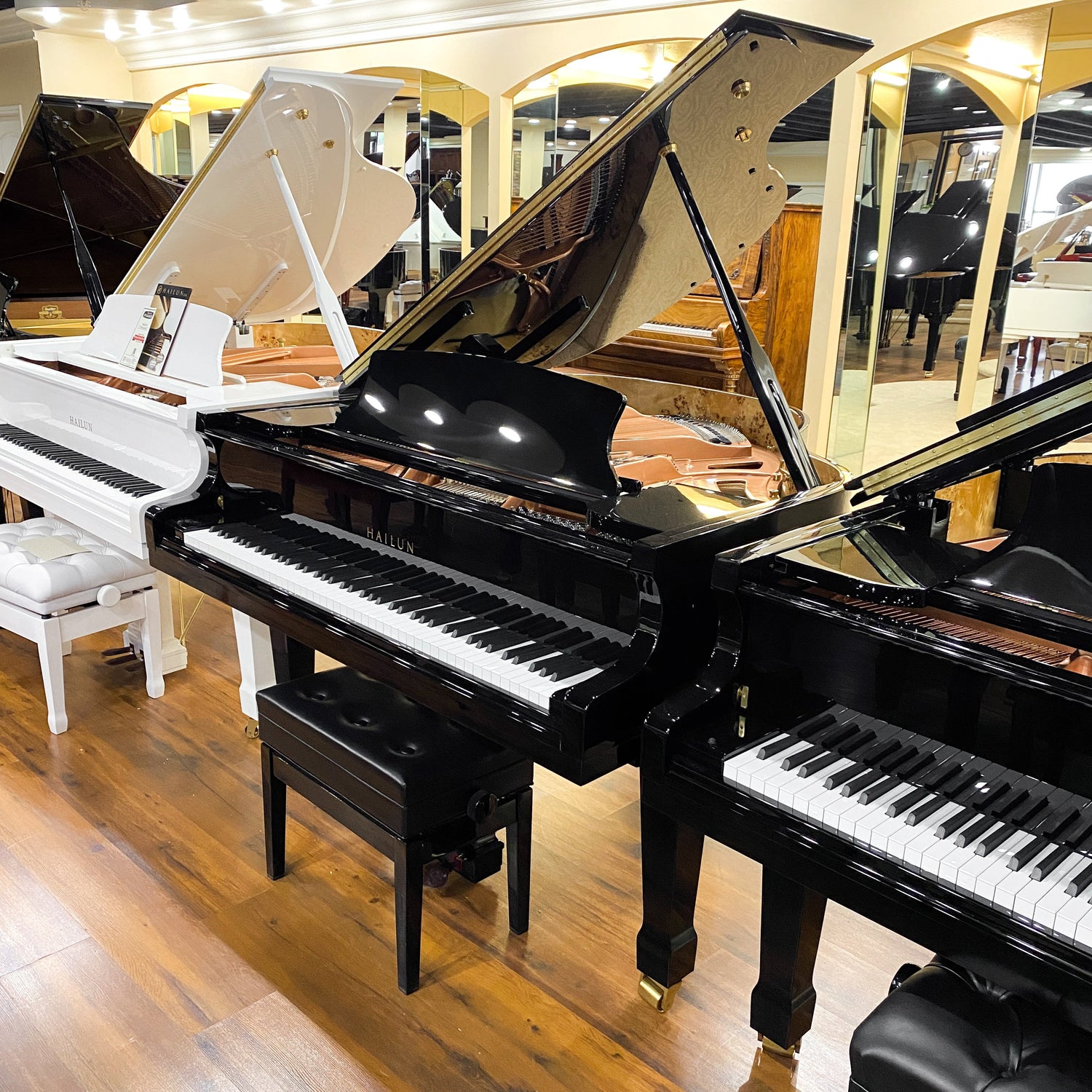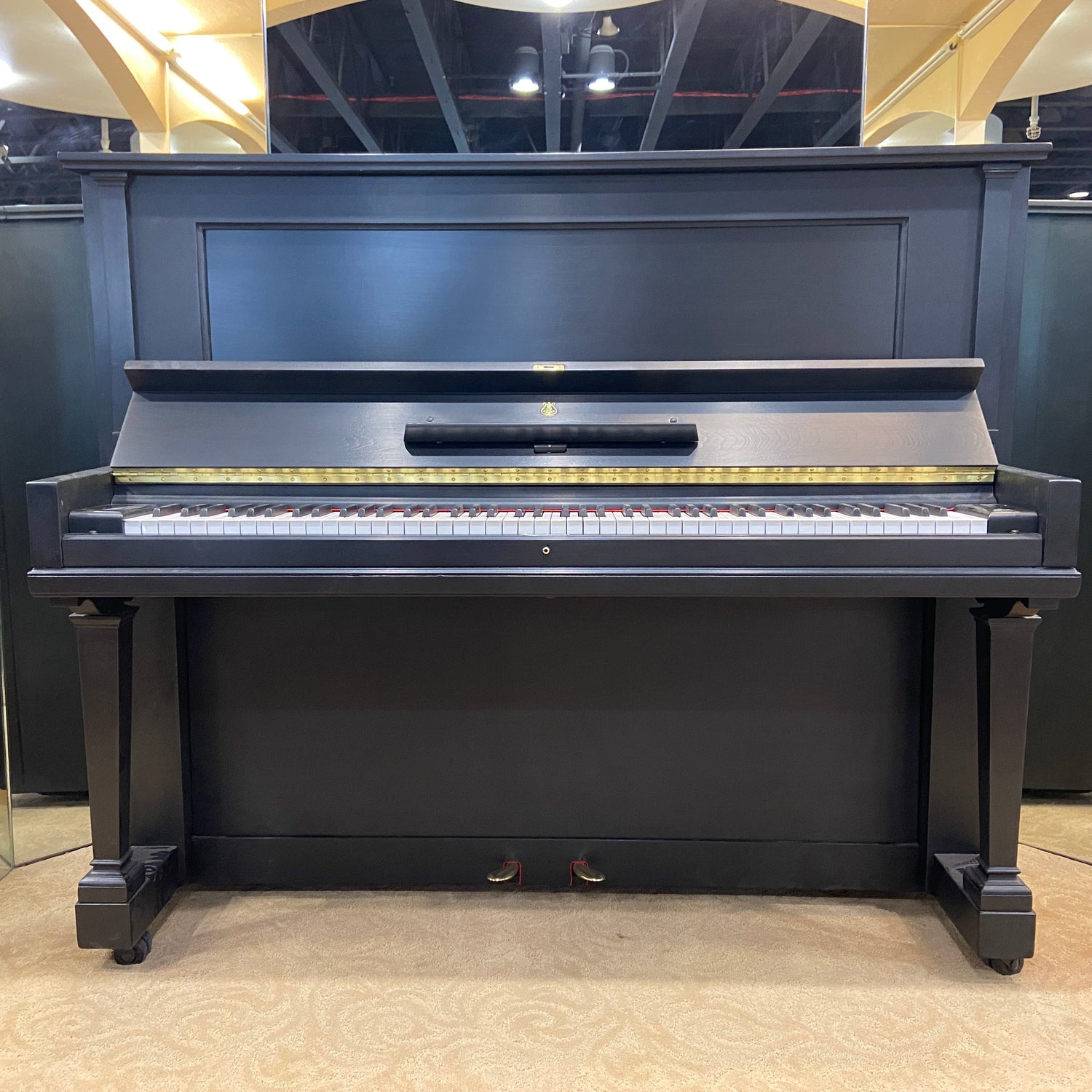
Haydn: Composer of the Month at Piano
Karmel LarsonShare
Haydn: Composer of the Month at Piano
by Chris Morrison
Franz Joseph Haydn (pronounced “high-den”) was one of the two grand master composers of the Classical era (roughly 1730-1820); the other was Mozart. Although Mozart was the most astounding child prodigy in the history of music and is more well-known to the general public now, Haydn was more famous during his time. He rose from relatively humble beginnings to become the most popular and celebrated composer in Europe, an incredible story of talent mixed with hard work. You might also like to know that he had one of the best senses of humor in music history! His compositions are packed with wit and jokes if you know where to look, and you’ll find an example at the end of this blog post.
Joseph Haydn was born in 1732 in Austria to a wheelwright father and a mother who was a former cook. His family was very musical and often sang together even though neither of his parents could read music. Sadly, young Haydn was not blessed with a long and happy childhood; he was shipped off to his relative Johann Frankh at only 6 years of age to begin his musical training, and never again lived at home. Imagine moving out of your parents’ house not at age 18, 19 or 20 but at age 6! Soon thereafter he moved to Vienna to become a choirboy at St. Stephen’s cathedral and gained a reputation as a prankster. One day he decided it would be good fun to cut off a fellow singer’s pigtail (without permission, of course), and that was enough for the choirmaster: Haydn was unceremoniously kicked out onto the streets.
He now had to fend for himself and over the next few years worked many different music-related jobs, such as teaching and accompanying. He developed into a very skilled practical musician, but felt he lacked knowledge of music theory and composition; to fix the situation, he studied music theory intensively on his own using leading textbooks of the day and learned composition from a singer/opera composer for whom he worked. Eventually he found his way into the employment of Prince Esterhazy, a wealthy patron who provided Haydn’s income for the next several decades. The Esterhazy castle sat in the middle of a small town about 30 miles outside Vienna and Haydn stated that because of this isolation, he was “forced to become original.”
Despite his isolated situation, Haydn began publishing his music for international use and became famous throughout Europe. He was invited to London in the early 1790s, when he was nearing 60 years old, and ended up making two extended visits there. The English absolutely adored him and he later stated that these visits were the happiest times of his life. He also wrote some of his greatest compositions while in London, including symphonies and string quartets. It’s interesting to note that on his way to his first London visit, he met the young Beethoven and took him on as a student of composition. Of course, Beethoven was Beethoven and later said that he had “learned nothing” from Haydn! Mozart, on the other hand, adored Haydn and considered him a great friend and mentor. Haydn felt the same way about Mozart and made this remark to Mozart’s father:
“Before God and as an honest man I tell you that your son is the greatest composer known to me either in person or by name; he has taste, and, furthermore, the most profound knowledge of composition.”
One of the reasons we revere Haydn nowadays is for his incredible contributions to the symphonic and string quartet literature; he is known as the father of the string quartet! “Papa” Haydn was an incredibly productive composer who wrote 106 symphonies, 68 string quartets, at least 15 operas, 47 piano sonatas, and many other works. His sonatas and other piano pieces, such as the F Minor Variations, are an important part of the classical piano repertoire. Haydn’s later piano works are considered masterpieces and are characterized by humor, wit, deep feeling, melodic inventiveness and his personal composition technique of using short motifs, or musical ideas, as the basic building block of an entire movement. This is a technique that Beethoven later used masterfully; perhaps he did learn something from Haydn after all.
Now for some examples of Haydn’s music. As you listen to the first one, try to imagine being a sleepy audience member at a long concert; you’ll be in for a surprise!
Haydn Surprise Symphony
The second example is one of his most beloved piano sonatas. You can hear the composer’s cheerful personality bubbling through, and also his technique of using small musical ideas to build an entire movement.
Haydn Piano Sonata
https://brighamlarsonpianos.com/otw-portfolio/chris-morrison-piano-academy/

